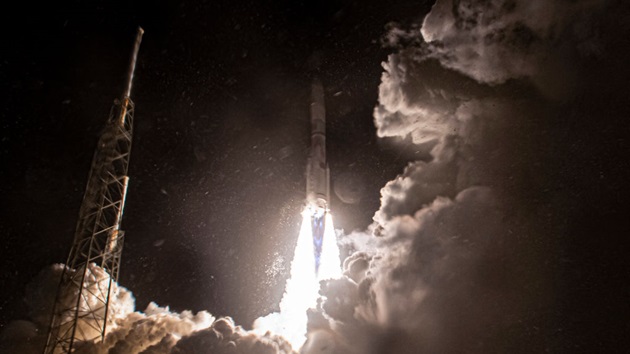(NEW YORK) — A company’s attempt to make the first commercial moon landing is in jeopardy after the spacecraft developed a “critical” fuel leak on Monday.
The Peregrine lunar lander, built by Astrobotic, launched with the Vulcan rocket from the United Launch Alliance — a joint venture between Lockheed Martin and Boeing — at 2:18 a.m. ET from Cape Canaveral Space Force Station in Florida.
Peregrine separated from the rocket about an hour later and was making its journey to the moon, which was set to take place on Feb. 23 and would have been the first U.S. soft moon landing mission in more than 50 years.
However, several hours in, Astrobotic said the lunar lander was experiencing a “propulsion anomaly” that was preventing it from orienting the solar panels toward the sun so it could collect power to operate. This was discovered to be a fuel leak.
Just before entering a “known period of communication outage,” the Astrobotic team said it developed and executed an improvised maneuver to reorient Peregrine’s solar panels toward the sun to collect sunlight.
While this helped charge the battery, it may not be enough for the moon landing to occur.
“Unfortunately, it appears the failure within the propulsion system is causing a critical loss of propellant,” Astrobotic said in a statement on the company’s website.
“The team is working to try and stabilize this loss, but given the situation, we have prioritized maximizing the science and data we can capture. We are currently assessing what alternative mission profiles may be feasible at this time.”
Astrobotic said the lunar lander is carrying 20 payloads from seven nations and 16 commercial customers, and among them are instruments from NASA.
The Pittsburgh-based company was one of several approved by NASA to build commercial lunar landers that the federal space agency, among others, would use to send instruments into space.
Among the five NASA instruments aboard Peregrine are those that would study the lunar exosphere, the amount of hydrogen in the lunar soil and radiation monitoring, according to NASA.
“NASA instruments aboard Peregrine will help NASA prepare for the Artemis program’s missions to enable a sustained human presence on the Moon,” Astrobotic said.
NASA and the Canadian Space Agency are preparing to send four astronauts to fly around the moon in the upcoming Artemis II mission later this year. If the mission is successful, Artemis III — a moon landing — is scheduled for 2025.
The Artemis team will be made up of three Americans — Victor Glover, Christina Hammock Koch and Reid Wiseman — and one Canadian, Jeremy Hansen.
“Each success and setback are opportunities to learn and grow,” Joel Kearns, deputy associate administrator for exploration at NASA’s Science Mission Directorate in Washington, said in a statement about Peregrine. “We will use this lesson to propel our efforts to advance science, exploration, and commercial development of the moon.”
If Astrobotic’s lunar lander does not make it the moon, another commercial company has the chance to do so. Intuitive Machines, based in Houston, has developed the Nova-C Lunar Lander, which is set to launch next month and will also carry five NASA payloads and commercial cargo. It will attempt to land near the south pole of the moon.
Copyright © 2024, ABC Audio. All rights reserved.












